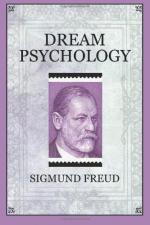The theory of the psychoneuroses asserts with complete certainty that only sexual wish-feelings from the infantile life experience repression (emotional transformation) during the developmental period of childhood. These are capable of returning to activity at a later period of development, and then have the faculty of being revived, either as a consequence of the sexual constitution, which is really formed from the original bisexuality, or in consequence of unfavorable influences of the sexual life; and they thus supply the motive power for all psychoneurotic symptom formations. It is only by the introduction of these sexual forces that the gaps still demonstrable in the theory of repression can be filled. I will leave it undecided whether the postulate of the sexual and infantile may also be asserted for the theory of the dream; I leave this here unfinished because I have already passed a step beyond the demonstrable in assuming that the dream-wish invariably originates from the unconscious.[2] Nor will I further investigate the difference in the play of the psychic forces in the dream formation and in the formation of the hysterical symptoms, for to do this we ought to possess a more explicit knowledge of one of the members to be compared. But I regard another point as important, and will here confess that it was on account of this very point that I have just undertaken this entire discussion concerning the two psychic systems, their modes of operation, and the repression. For it is now immaterial whether I have conceived the psychological relations in question with approximate correctness, or, as is easily possible in such a difficult matter, in an erroneous and fragmentary manner. Whatever changes may be made in the interpretation of the psychic censor and of the correct and of the abnormal elaboration of the dream content, the fact nevertheless remains that such processes are active in dream formation, and that essentially they show the closest analogy to the processes observed in the formation of the hysterical symptoms. The dream is not a pathological phenomenon, and it does not leave behind an enfeeblement of the mental faculties. The objection that no deduction can be drawn regarding the dreams of healthy persons from my own dreams and from those of neurotic patients may be rejected without comment. Hence, when we draw conclusions from the phenomena as to their motive forces, we recognize that the psychic mechanism made use of by the neuroses is not created by a morbid disturbance of the psychic life, but is found ready in the normal structure of the psychic apparatus. The two psychic systems, the censor crossing between them, the inhibition and the covering of the one activity by the other, the relations of both to consciousness—or whatever may offer a more correct interpretation of the actual conditions in their stead—all these belong to the normal structure of our psychic instrument, and the dream points out for us one of the roads leading




